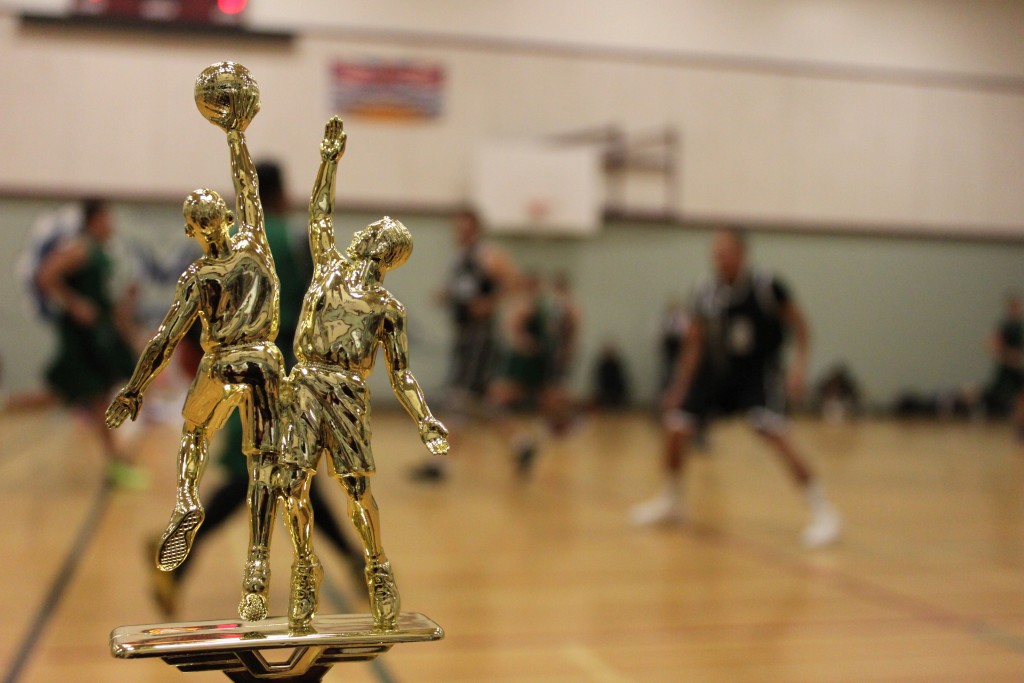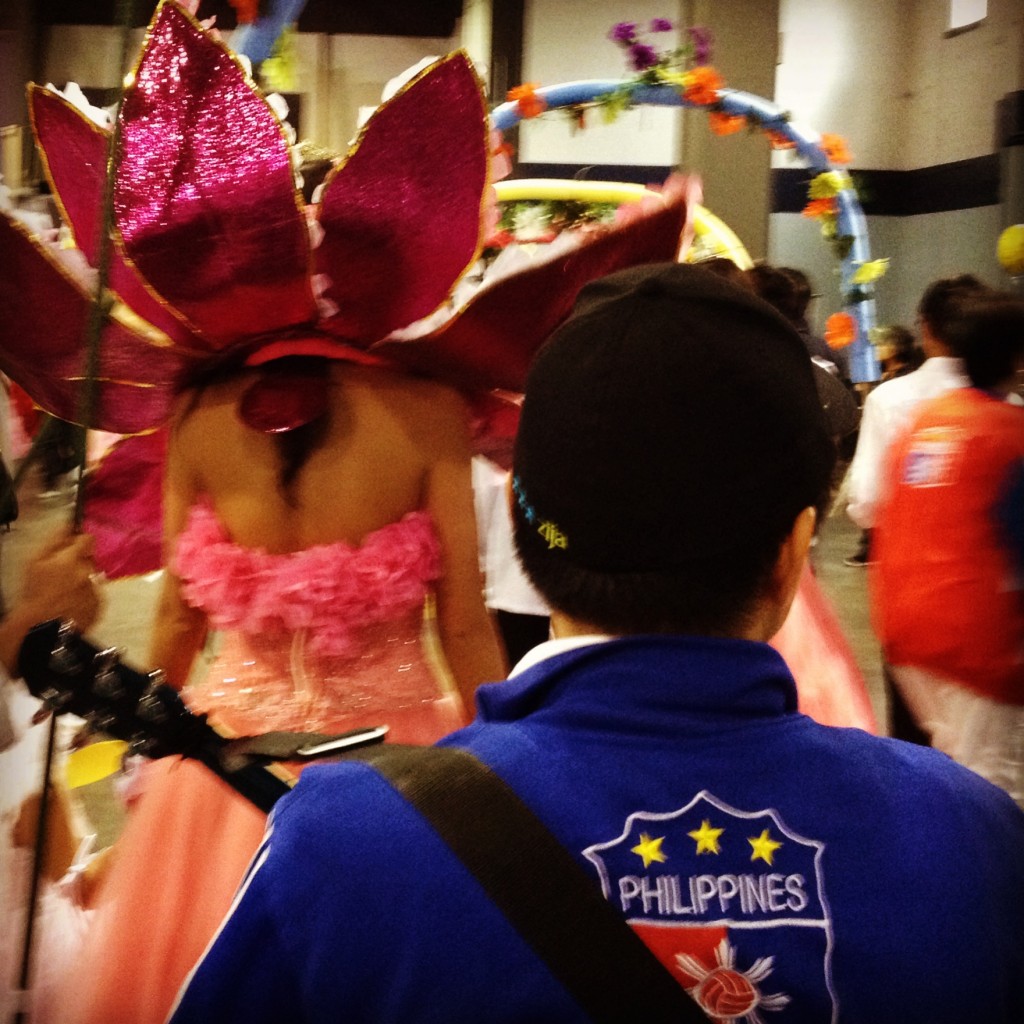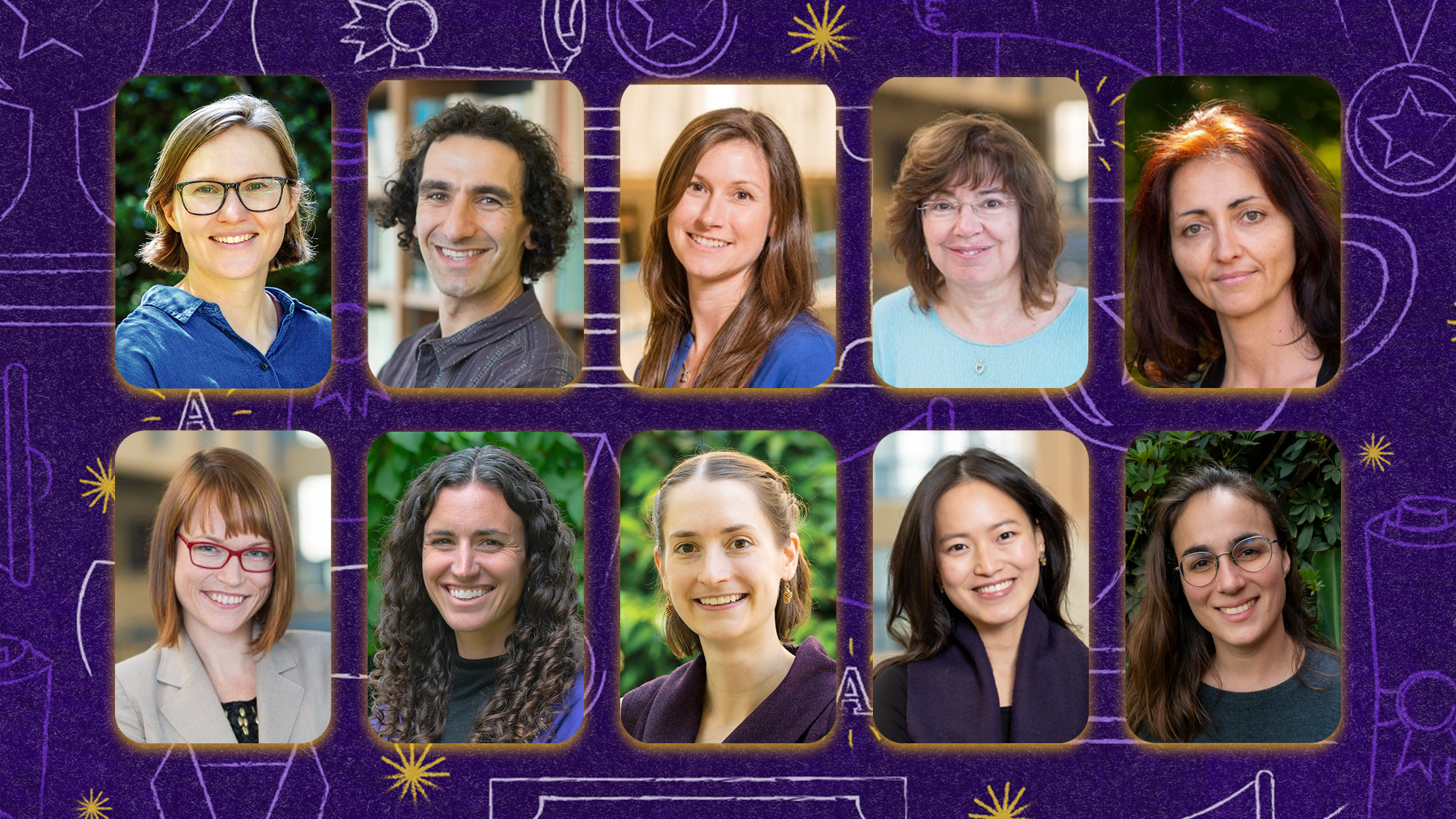Article and photos by May Farrales, PhD Candidate
I walk into a small school gymnasium on the outskirts of Coquitlam. The gym floor and stage are crowded with players. Many of the players have come here straight from work and are eager to get on the court. I scan the gym for any familiar faces and see a few players whom I recognize from other locally-organized Filipino men’s basketball leagues in Burnaby and Vancouver. I’m here in this little gym to watch three basketball games. In between games and plays, I chat with the players.
On another evening, I’m in another gymnasium. While this gym is also crowded, instead of the men in basketball shorts and jerseys, members of the Filipino community are wearing dress slacks and skirts. I’m attending a beauty pageant organized by a local Filipino community organization. Each contestant wears a sash representing the twelve months of the year. Like the men who play basketball, these women come from various backgrounds. Some are temporary foreign workers, others are students. I sit with the rest of the audience members behind the judges’ table as we cheer the contestants on, in-between whispers of who we think deserves to win.
What is it about basketball and beauty pageants that bring so many Filipinos of different generations, occupations and backgrounds together? In the Philippines, basketball and beauty pageants are hugely popular. Games range from pick-up games on barrio streets to the commercialized courts of the Philippine Basketball Association in Manila. Not to be outdone, pageants span from barrio-wide festival contests to the commodified runways of the nationwide Binibini (Miss) Philippines competition. These contests bring different classes and conflicted communities together in competition, and as such are touted as opportunities for social and class mobility. Like one former beauty pageant contestant explained to me “It’s basically for the money.”
But what is it about basketball and beauty pageants that bring so many Filipinos of different generations, occupations and backgrounds together here, in Vancouver, the unceded and traditional territory of the Coast Salish peoples? In thinking about the ‘here’, I am necessarily brought back to wrestle with what conditions make up this ‘here.’ And to do this work of coming back to the conditions of here means to think seriously about colonialism. Indigenous scholars, activists, communities and peoples are doing much work to bring to the fore the need to contend with the ongoing and violent dispossession of Indigenous lands and peoples shaping today’s configurations of settler colonialism. But what, you might ask, does this have to do with Filipinos who come together to play and pageant on the unceded territories of the xʷməθkwəy’əm (Musqueam), Skwxwú7mesh (Squamish), Stó:lō and Selilwitulh (Tsleil-Waututh) Nations?
This question is at the heart of my visits and conversations with the people in my community who organize and participate in these year round events. Basketball and beauty pageants are legacies of Spanish and American colonialism and imperialism in the Philippines. In these spaces, Filipino men and women play out gender and sexual expectations and roles. In many ways, these gendered and sexual expectations are carried onto the basketball courts and pageant runways. But while certain things carry on, these expectations and performances are also being remade in the context of settler colonialism and conditions in Canada. Gender and sexuality are fundamental to colonial and empire-building projects. Colonialism continues to shape which masculinities, femininities and sexual desires are acceptable while making other ways of being and desiring improper. As I carry out my research, I am learning about how these multiple layers and histories of colonialism and imperialism articulate with the varied experiences of Filipinos in Vancouver.
This research has deepened my appreciation for the different ways that we are resisting, reworking, and re-envisioning these imposed gender and sexual expectations. There is still a lot for me to learn. But for now, what I can say is that on basketball courts and pageant processions, play is serious.
* Special thanks to Jessica Hallenbeck and Leah Diana for their input on this article




